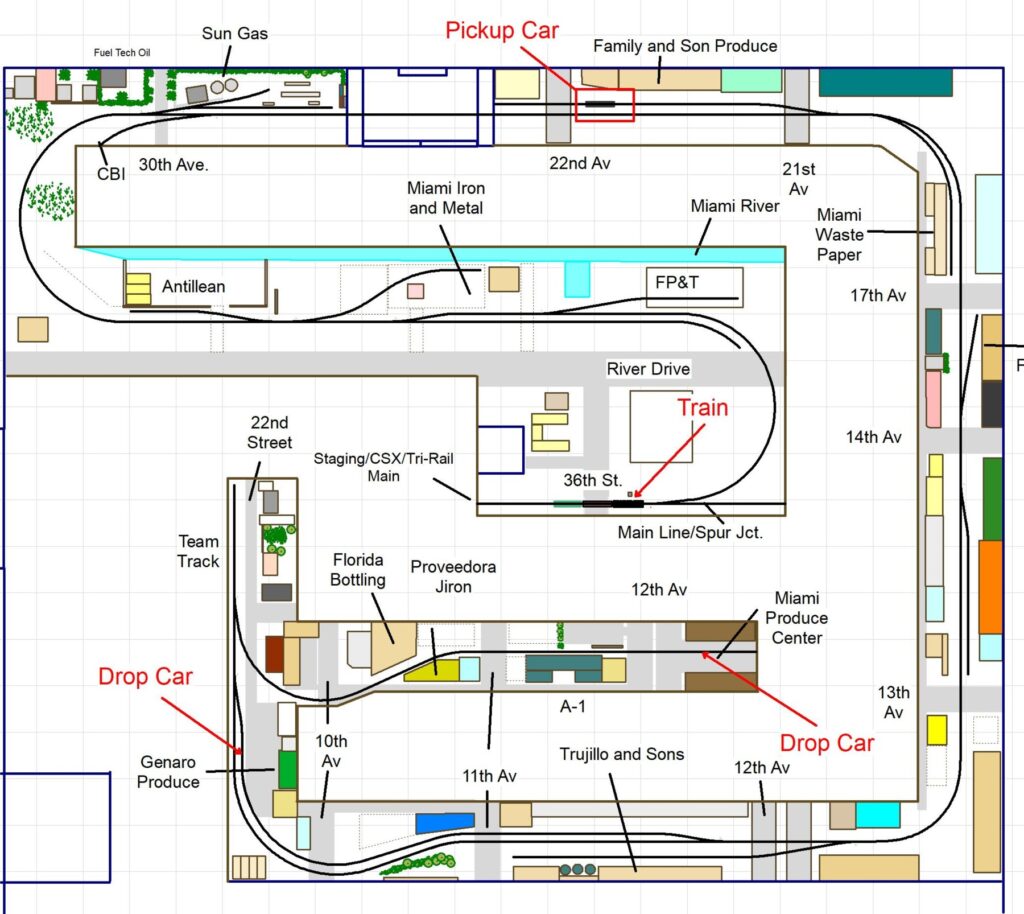
An impromptu session on the layout consisting of three car movements, and only using four turnouts, took about sixty minutes. 3 + 4 + 60.
Gaining an understanding of how much model railroad we need in order to be “entertained” is one of the fundamental pillars of a”successful” design. Easier said than done if you’re just starting out.
A major challenge of being new to the hobby is that the modeler doesn’t have the experience to know how much layout is required to spin off the degree of play value they require to feel satisfied. They (including me at that stage) don’t know what they don’t know. In order to compensate, and build in a margin of error, they overload their “wish list” of desired features. It may only take “X” amount of layout to keep them entertained but they don’t know that yet. So, in an effort to avoid putting heart and soul into an effort that falls short in the fun department, they set a scope of “6X”.
Typically it’s not “just a bit” of overcompensation, it’s taken to an extreme. The end result is a myriad of design problems, chief among them being 6X won’t fit in their space. A close second being they have yet to gain the construction fundamentals to build 6X. What often happens is the layout never gets off the ground.
Everybody is different, each of us requiring different levels of element density to be satisfied. It may be a bitter pill to swallow but you can’t gain that self-awareness by surfing the net or conducting endless hypothetical thought experiments on your computer. Spending two years sketching and hand wringing will tell you absolutely squat. Investing three months building a small test layout will tell you tons. You’ll gain the self-awareness and the intuition needed to understand how long construction tasks take and how much operational fun you get from different arrangements.
I encourage people to think in terms of how many minutes of op. session enjoyment a plan will spin out. Keep in mind that you’ll usually be running by yourself and most people have “had enough” after an hour or so of running and playing around.
As a point of reference, let’s look at today’s blog title: 3 plus 4 equals 60. That’s three car movements, utilizing four turnouts, spins out a leisurely 60 minute session. Yesterday I put a cup of coffee on, and ran a session consisting of picking up one empty and dropping two loads at the end of the line. I didn’t use car cards. I wasn’t running with wrinkled brow or any degree of seriousness. I took frequent pauses to represent the conductor walking back and forth. I set the fusee’s for the road crossings. I ran at a slowish pace but it certainly wasn’t a 1 mph crawl either. I was surprised when I looked at the clock to see that an hour had passed. In other words it didn’t take that much to keep me entertained.
If you’re new to the hobby, and interested in branch or industrial switching operations, a good starting point is a plan with four to six turnouts. Get off the computer, slap a shelf on the wall and start experimenting.
As a sidebar, here are two examples that might prove helpful in establishing the pace of operations.
Example of plain vanilla prototype car pick up HERE.
Examples of good model railroad switching pace can always be found on Rick’s SoCal Models YouTube page. This is about the speed I run at.
Very well put. Managing realistic expectations is one of the most challenging and underrated aspects of “serious” model railroading. Coming to terms with the realities of constraints; physical, financial, temporal and skill, not to mention sustained interest is something that can often be an insurmountable hill for modelers to climb. For myself, it leads to analysis paralysis and disinterest, sometimes doubt and fear for moving forward. The second-guessing of my own design and desire with what I’ve developed can be a real intimidating factor. You hit the nail on the head with “just move forward” – it really doesn’t have to be complicated.
As I’ve refined my layout design, I have shed elements that I found weren’t essential for the prototype operation scheme I have been going for. There are some things that are “required” (say, runarounds, specific yards and industries) but other things that are REALLY compelling from a proto modeling perspective, but are they really necessary? No, probably not. Let them go. My layout sits in a small room – 6’x25′ and it will take a lifetime to get it done. I’m happy with that. And when it’s fully functional, I expect it to take hours for a large train to operate on it and an hour or two for a smaller, more reasonable “solo” train to traverse it. That’s perfect for me, and well within the means of what I can do.
Anyway, I really enjoy these sort of manageable perspectives – it helps me to center my own focus as I move forward. Good stuff.
Thanks Ben. When we had the op.session at Kelly’s I had the Georgetown switcher. I think there were only a dozen moves on the switchlist. Nothing complicated. No tricks. Even so it took about two hours. Part of that is that the yard area is fairly long so it takes some time shuttling back and forth. Really fun.